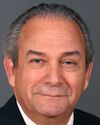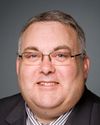Thank you, Mr. Chair.
Just to put Mr. Proulx's mind at ease, on page 7 there's a clear identifier that you are looking at cost savings. Maybe at some point you could detail what type of cost savings you envision by working with the provincial and territorial electoral partners. Reducing duplication is one way, obviously, and I'd be interested in hearing a little more detail on that.
Prior to your answering that one, I want to go back to page 5, where you outline six different areas that you're focusing on in between elections in order to improve the administrative and voter turnout. I want to highlight two.
The area dealing with physical disabilities and visual disabilities is, I think, key, and I'm really pleased to see you focusing on that.
The other area relates to increasing the voter turnout among our youth. Certainly anything we can do there...and we've discussed that a number of times at this committee. I'm wondering, though, if there's any possibility for Elections Canada to work more closely with high schools who are using the Student Vote approach. I think it's voluntary right now.
I'm not sure if you have a direct relationship with the high schools--



